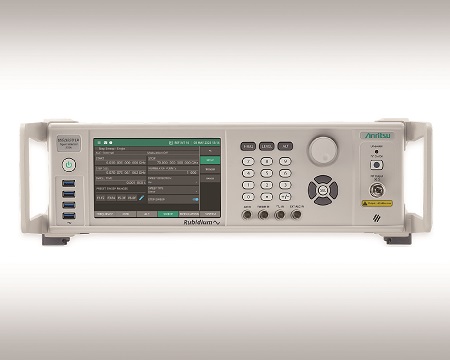Anritsu has expanded the frequency range of Rubidium high performance analogue signal generators
The MG36271A signal generator covers 9 kHz to 70 GHz to meet the needs of emerging extremely high frequency designs. With high signal purity, output power and frequency stability, the MG36271A fills a gap in the Q/V frequency band, providing significant benefits to aerospace and defence, test and measurement, communications, components, and research applications.
The MG36271A brings the performance of Rubidium to higher frequency applications. It has phase noise of -136 dBc/Hz (typical) and -140 dBc/Hz (measured) at 10 GHz and 10 kHz offset, and very low harmonics for unprecedented signal purity. With a robust output power of +9 dBm at 70 GHz, the MG36271A addresses a range of measurement applications in the Q/V band. Rubidium’s frequency stability (Allan deviation) of 8x10E-12 per 100 seconds is derived from an atomic clock reference which is an order of magnitude superior than other signal generators that use an OCXO reference oscillator.
As is the case with all Rubidium signal generators, the MG36271A offers an extensive set of modulation, frequency sweep, synchronisation and level control capabilities. Its modulation capabilities include AM, FM, phase and pulse to support simple to complex analogue signal simulation requirements. In addition, the MG36271A offers comprehensive pulse generation capabilities to test pulse radars. All modulations can be driven by either internal or external signals.
Housed in a 3U chassis, the Rubidium MG36271A has a 7-inch touch screen and traditional keypad/dial interface on the front panel. It features 4 USB 3.0 ports on the front panel, a GPIB port on the back panel, and a 10/100/1000 Ethernet port. The MG36271A can be controlled remotely through standard IVI-C and IVI.NET drivers and via support of SCPI/Native commands.
- UK manufacturing steps up to COVID-19 crisis - April 2, 2020
- Clustering Innovation - March 12, 2020
- A Global Monitor - March 6, 2020

